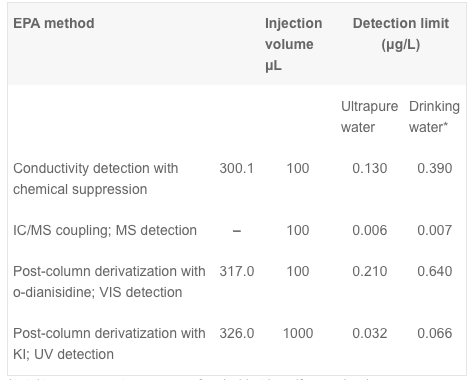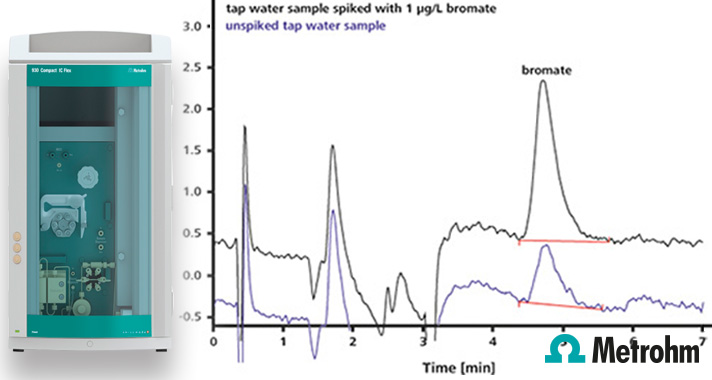Bromate in water according to EPA 326: Post-column derivatization with KI and UV detection.
Bromate in water, especially drinking water, is harmful and undesirable. Exposure to large amounts of bromate for a long period of time may damage kidney or even cause cancer. This led to the Safe Drinking Water Act that requires the Environmental Protection Agency (EPA) to determine the level of contaminants in drinking water at which no adverse health effects are likely to occur.
Depending on the required detection limit, different detection methods can be used. Conductivity detection with chemical suppression allows the determination of bromate in the lower μg/L range. In the ng/L range, bromate can be detected by IC/MS coupling or post-column derivatization with potassium iodide and subsequent UV detection.
Bromate in water according to EPA 326.0

*Drinking water matrix: 100 mg/L of each chloride, sulfate, and carbonate









